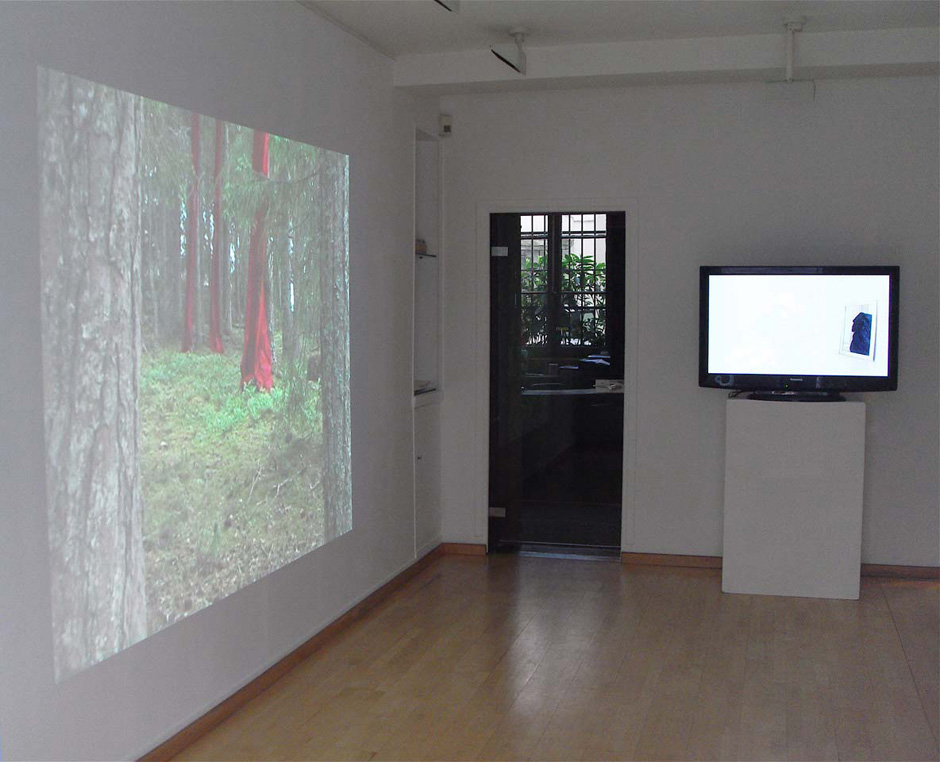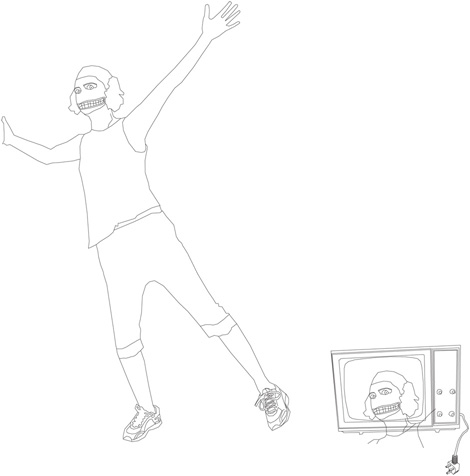Dream of a Dream

Installation view at Galerie Arnaud Lefebvre, Paris, France.
How Real is it to be Oneself?
OH: "Do you have trouble being yourself?"
"Is there a way a man can be only himself?"

OH: No one waking up on misty mornings could tell their dreams apart from reality, or poems apart form life or names apart from people. […] No one ever asked if a story was real because stories were as real as the lives they described.
A pre-requisite for the medium of video is the screen. These screens cut through the landscape, generating a division between the real and the fictional, inserting the recorded into present time. Whilst making the cut through space the screen also inserts a dual or multiple existence of time. The fiction, when screened, infiltrates and spills into present consciousness altering the perception of now.
OH: For it now occurred to him that there might be yet another room in some other part of the city that had been furnished and arranged to look exactly as it had twenty-five years ago.
The screen cannot be the end point of video and film. Think of the section the Order in Matthew Barney's Cremaster 3 filmed in the Guggenheim, then imagine the film screened and one is allowed to walk through the Guggenheim and there are all the characters in live, physical presence. One (the film) can exist without the other; the other becomes a reference to nothing, a spectacle, without the film. Together they transcend the presence of the film, they unify in a tilt of reality, presenting the bleed between two images of the same, one physical and one filmed.
OH: "Because all murders are copies of other murders, just as all books are copies of other books". "But what we love most of all are imitations of imitations, […] because it is only when a man believes himself to be another […].
To look for existence by making use of characters such as clowns, animals and feminine archetypes, is to make a looking glass of fiction. Within their collected facets of fabrication these characters make up a history of living. They move between medium, they appear in video, in live events and on the pages of written accounts, the imitate themselves, they refer to themselves, they contradict their own presences. Through basic masking they can exist within the same (video) frame, not able to touch but leastways to greet.
In my fond hopes, the fictional has once again merged with the real. I am not myself, I am other than myself, and in that I am more myself than ever before. I keep walking and I move further away from my past, heading towards my future. With every step I keep walking past my present, passing it as in a dream, a rising mist of everything I ever made up. It is as true as everything else around me.
The artist in conversation with passages in Orhan Pamuk's the Black Book.
Orhan Pamuk, The Black Book, (1990), in a new translation by Maureen Freely, (2006). Published by Faber and Faber Limited, London.
Published in balsas.cc online research journal.